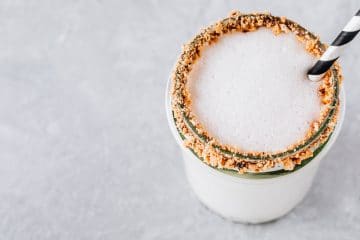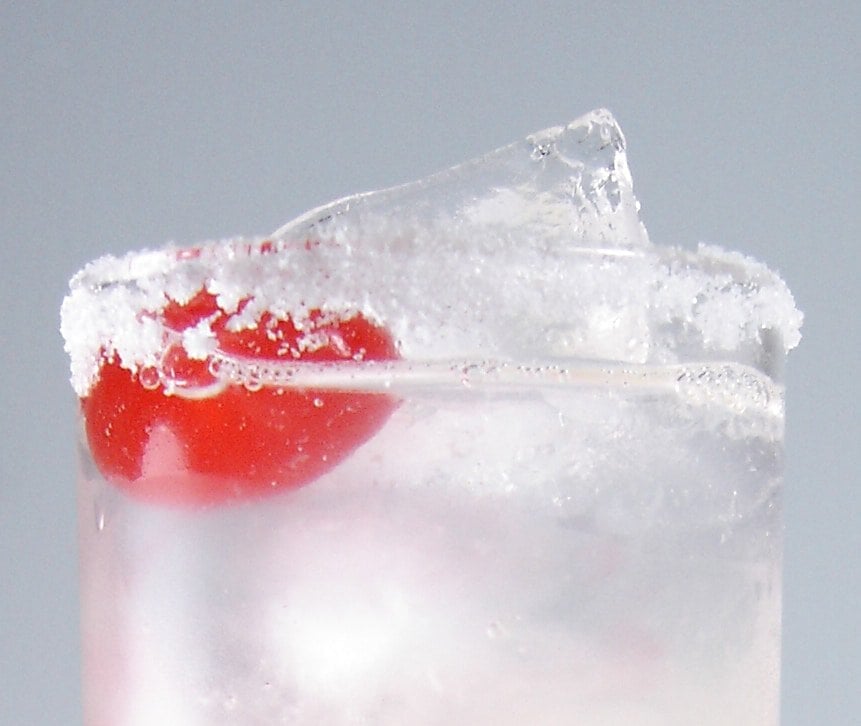The most common references you will see about the Green Swizzle, are the recipe that incorporates creme de menthe, or the quote from The Rummy Affair of Old Biffy. It has been said, many times, that the creme de menthe version is not the original recipe and that the original has been lost in history or that it never existed. These two statements I do not agree with, and I’ve managed to dig up a number of articles that prove the Green Swizzle did exist, and that the original recipe may be right in front of our eyes.
Writing about the Green Swizzle won’t mean much without the following historical references. Especially the following quote from the Rummy Affair of Old Biffy by P.G. Wodehouse (1967):
"I have never been in the West Indies, but I am in a position to state that in certain of the fundamentals of life they are streets ahead of our European civilization…A planter, apparently, does not consider he has had a drink unless it contains at least seven ingredients, and I’m not saying, mind you, that he isn’t right. The man behind the bar told us the things were called Green Swizzles; and, if ever I marry and have a son, Green Swizzle Wooster is the name that will go down in the register.."
Even Trader Vic makes a note in his recipe for the Green Swizzle and states: “Not what Bertie had at Wembley”.
Dave Wondrich’s take on the Green Swizzle, in Esquire, is that he is vaguely convinced that the mysterious Green Swizzle from Wodehouse did exist. But other than a passing reference, there is nothing else to substantiate the existence of this drink.
Now, with the research that I’ve done, I can guarantee that the Barbadian Green Swizzle did exist, and there are a number of historical newspaper articles that make reference to this drink and possibly even a recipe.
Most of the mentions, in historical newspapers, state the following: if you were going on a trip to Barbados, you must have a “Green Swizzle”. It is mentioned at least a dozen times from 1890 to 1962.
By the start of World War II (1939) it seems that the original Green Swizzle was dead. An article from June 8, 1941 in the Chicago Tribune has a story about a trip to Barbados and the ships Captain recommending everyone try the Green Swizzle. Having ordered the drink, they asked the bartender to bring them the recipe and soon discovered that it was rum, lime and “green dye from the pharmacy”. The drinks were immediately put into the discard.
Eventually, the creme de menthe version would propagate and establish itself as the Green Swizzle.
Now that I have a well-established addiction of reading historical newspapers, I’ve come across lots of interesting things. Obviously, my last article on Falernum being one of them. But, the original Green Swizzle has a very strong connection to that article which details an original Falernum recipe from 1896.
If you’ve read the article, you may have noted that the traditional way of enjoying Falernum, which was made like a punch, was to add some wormwood bitters. According to most of the newspaper articles, the "green" in Green Swizzle is a reference to the wormwood bitters. Interesting coincidence.
Sometimes, when a recipe becomes bigger than life, as the Green Swizzle did in the later 1800’s, and early 1900’s, people apply a legendary status to this drink, much like absinthe. The reality is usually the complete opposite. And my belief is that the Green Swizzle is actually the punch the Bajan’s enjoyed, just done up as a swizzle.
The following newspaper article from 1910 (New York Times) details the drinks of West India and has some very insightful comments about the Green Swizzle, which helped me to figure out the recipe.
“Most true Swizzles, because of their origin, call for rum; but nearly all punches can be swizzled.”
Falernum Punch and Wormwood Bitters
One of the statements made in these articles is that to make a proper swizzle, you need to “frost the glass and this can only be done with strong spirits”. I’m pretty sure that most reputable places in Barbados served a good strong rum. This could mean a lot of things though. The Falernum recipe states “it is essential that the rum be absolutely pure”. I’m thinking that over-proof rum is the closest modern equivalent, and that is what should be used for the recipe. Obviously, white rum is proper, since an aged rum would muddy the green colour of the swizzle.
Making the original Falernum is very easy, and I’ll concede that using pure almond extract is probably the fastest, and easiest, way to try out the Green Swizzle. Orgeat may be tempting, but it will add too much sugar and other flavours (orange flower) into the mix.
The next step is to make the ingredient that gives this swizzle its name, and that is a wormwood bitter. The newspaper article calls it a “vermouth like liquor, the basis of which is wormwood”. When you look at the Falernum article, the locals simply enjoy the Falernum Punch with wormwood bitters that are made by soaking wormwood in alcohol. I’m going to assume that Occam’s Razor applies, and that is “the simplest solution is the most likely solution”.
Now, it is possible Barbados had access to a commercial wormwood bitter, which is usually associated with Bohemian Absinth from the Czech Republic. This would also fill in the “green” as a colour in the swizzle, and possibly the reference to a “vermouth like liquor”. “Absinthe verte” anyone?
Remember, the time period of this article is pre-absinthe ban and the demise of the original Green Swizzle may be associated with the demise of commercially available absinth(e). That is my hypothesis anyway.
I cannot definitively state that Czech or French/Swiss absinth(e) was used, but my guess is Czech absinthe is a better match since the anise flavour in absinthe would be too far from the original “wormwood soaked in alcohol” bitters found in the original Falernum recipe.
Just to be as original as possible I whipped up a batch of “Darcy’s Not So Special Wormwood Bitters”. Basically, a handful of wormwood in over-proof rum. I just waited until the “green” was brilliant.
Before we get to the actual recipe, I don’t get the feeling that modern Falernum is proper in this recipe. If you must, go ahead, but this Green Swizzle is from scratch, except the almonds, which I’m using almond extract. I’ve pared down the recipe to make a single serving.
Green Swizzle
1½ oz Rum (Over-Proof)
1 oz Simple Syrup (1:1)
½ oz Fresh Lime Juice
1-2 Drops Almond Extract
1 tsp Wormwood Bitters
Instructions: Fill a collins glass with crushed ice and then all of the ingredients. Take a swizzle stick and "swizzle" vigorously to incorporate air into the mixture.
Note: If you have a stand mixer, like the ones used for milkshakes and Tiki drinks, it will be perfect for this drink.
Taste-wise, I really like this drink. The wormwood bitters really add something unique to the drink and the almond extract brings that familiar falernum/orgeat aroma.
Next time, I’m going to allow my wormwood bitters to develop a really dark colour. The swizzle is light green, but the frost on the glass is hiding it, a bit in the picture, and I’m sure the green intensity could be more if I had used a strong wormwood tincture. Plus, I might use a smaller glass. This drink is definitely worth a try though.
Corn ’n Oil
This article wouldn’t be complete with out mentioning the Corn ’n Oil, which may very well be the evolutionary next step of the Green Swizzle. Obviously, with wormwood being frowned upon for the past 70+ years, and Falernum transforming from a punch to a syrup, the "green" may have had to evolve into something. The Corn ’n Oil seems to be the closest thing.
The Corn ’n Oil is a simple mixture of Rum, Falernum, bitters and lime juice. It seems to be the next step for the Green Swizzle.
Corn ’n’ Oil
2 oz Bajan Rum
½ oz Velvet Falernum
¼ oz Lime Juice
3 Dashes Angostura Bitters
Instructions: Build in a highball glass packed with ice.
Alas, time has taken its toll on the legendary Green Swizzle, probably in no small part due to the world’s opinion on absinthe and wormwood. The creme de menthe version will probably forever stand as the recipe for the Green Swizzle. But sometimes, a long lost recipe can be resurrected and enjoyed by those who truly enjoy the history of drinks.




